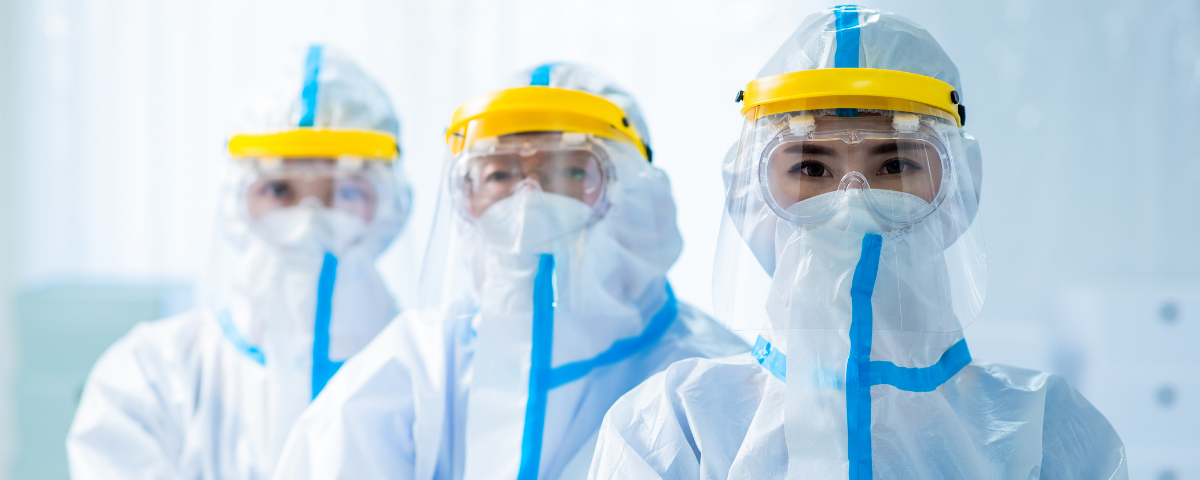Before you start thinking about what to wear for a medical procedure, such as a colonoscopy, let’s talk about Preparedness. Preparedness is the process of anticipating the unknown. It is a mindset. It is a way of thinking. Preparedness is something that can be achieved through empowering oneself with information.
What is PPE?
The phrase “personal protective equipment” (PPE) is most often used to describe workplace protective equipment, such as gloves (you can see some examples of what’s available over at https://serp.co/best/nitrile-gloves/ when it comes to these), goggles, masks, and other items used to protect against infection and other health concerns in a workplace setting. This blog post will explore the issue of PPE to prevent infection from the coronavirus (CoV) and how the recent outbreak in Saudi Arabia has affected PPE requirements for healthcare workers.
An essential piece of PPE is a facemask to help prevent the spread of airborne infections. This mask is not only effective against airborne viruses such as the coronavirus, but it is equally effective against bacterial and fungal infections. It is not just a piece of equipment you wear; it is an important tool that you must carry out with your PPE when working with an infectious patient.
How does PPE work?
In the wake of the Coronavirus outbreak, many hospitals have implemented PPE (personal protective equipment) protocols in the interest of patient safety and infection control. It means that all hospital authorities need to wear face masks, face shields, gloves, eye goggles, and disposable isolation gowns (which can be bought from companies similar to SciQuip). While it’s important to note that PPE is an effective tool in preventing the spread of infection, many are wondering if PPE protocols are still needed following the Coronavirus outbreak?
Is PPE still needed for Coronavirus? If you ask many people, you will hear that the use of Personal Protective Equipment (PPE) is not necessary for treating patients with mild cases of the common cold. This is because most people don’t get as sick as those who develop severe cases. However, the CDC says that PPE must be used for those with severe cases. It’s important to know that even little kids can get severe cases of the common cold, such as bronchiolitis, and that PPE must be used for them, so it’s still worth stocking up on things like gloves from stores such as unigloves for the time being.
Pathogen-Prevention Engineering is a philosophy that is based on the notion that the human body is equipped to control and limit infection by pathogens that harm us. The most straightforward way of doing this is to protect ourselves: using protective clothing to prevent infection, washing our hands to prevent contamination, and taking our prescribed medications to prevent diseases. But some pathogens are so deadly or spread so fast that it’s hard to keep them from reaching the bloodstream, the airways, or the other parts of our bodies that are vulnerable to infection. Some of these pathogens, like the coronavirus, cause severe pneumonia in people who come down with severe colds. Others, like the poliovirus, can cause paralysis or even death.
Importance of using PPE
Our bodies are home to hundreds of millions of bacteria, and they outnumber our cells by 10:1 These microorganisms are so important to our health that not only do they account for up to 70% of our immune system, they also produce vitamins and dietary fiber, balance hormones, and perform a wide variety of other functions. One of the critical functions of the gut microbiota is to protect us from harmful pathogens by producing antimicrobial peptides.
These days, a lot of people have been asking about the importance of a biohazard suit or in better terms about the Personal Protective Equipment (PPE) these days. Many people have called PPE “unnecessary” or even “superfluous.” They then ask – if PPE is so important, why doesn’t everyone wear it? The reason is simple: PPE is only designed to protect you from getting infected by a virus. It will not protect you from getting sick, and you may very well get sick even if you’re wearing PPE.
When it comes to public health, the effectiveness of personal protective equipment (PPE) and the threat from airborne infections are issues of great importance to the public and health professionals alike. At this time, there is no vaccine for the coronavirus, which is highly infectious and causes severe respiratory illness in humans. (You may have heard about it in the news.) So, in the absence of a cure, how does PPE protect against this virus? The answer is that we wear PPE to protect us from the virus; the equipment we wear is designed to prevent the spread of the infection or to isolate us from infected individuals.

